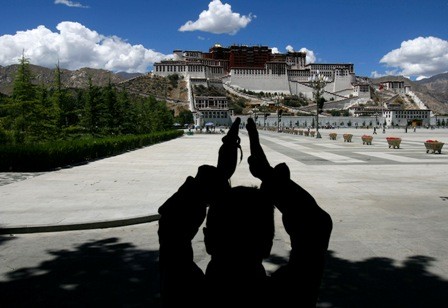The Chinese central government and authorities in the Tibet Autonomous Region have undertaken a long-term restoration program aimed at preserving the paintings, frescos, cultural relics, scriptures and buildings at Tibet’s historic Potala Palace, one of the three UNESCO World Heritage sites in the region, the China Daily reported.
Ding Changzheng, the Party secretary at the Potala Palace Management Office, said that the government has invested heavily in the project, especially in renovation and preservation of the site.
According to the report, the Chinese government has spent more than 204 million yuan ($34 million) in the latest 10-year-long renovation project. The five-year preprogram launched at the palace in 1989 cost around 53 million yuan, the report added.
Ding said that the government has asked many prominent Tibetan thangka painting artists to help restore and renovate some of the frescos in the palace.
The report said that many people believe that the restoration of the historic palace is long overdue.
"The palace has been standing in the wind and rain for more than 1,300 years. The construction materials were mainly earth, stones and wood, so renovation is very necessary," Yulha Tsering, a firefighter stationed at the site, said.
The report said that the renovation department of the palace office carries out the daily maintenance and preservation work, aside from the large-scale restoration project being managed by the two governments.
Ding said that they have noticed a dramatic increase in the number of tourists and pilgrims visiting the palace as a result of the restoration efforts.
"The daily number of visitors is more than 6,000 in the summer season, compared with 2,000 to 3,000 in the past."
Tibetan king Songtsen Gampo built the palace in the seventh century. It was extended by the fifth Dalai Lama, and was used as the residence of successive Dalai Lamas.
The other two UNESCO World Heritage sites in Tibet are the Jokhang Temple and the Norbulingka Park.



























